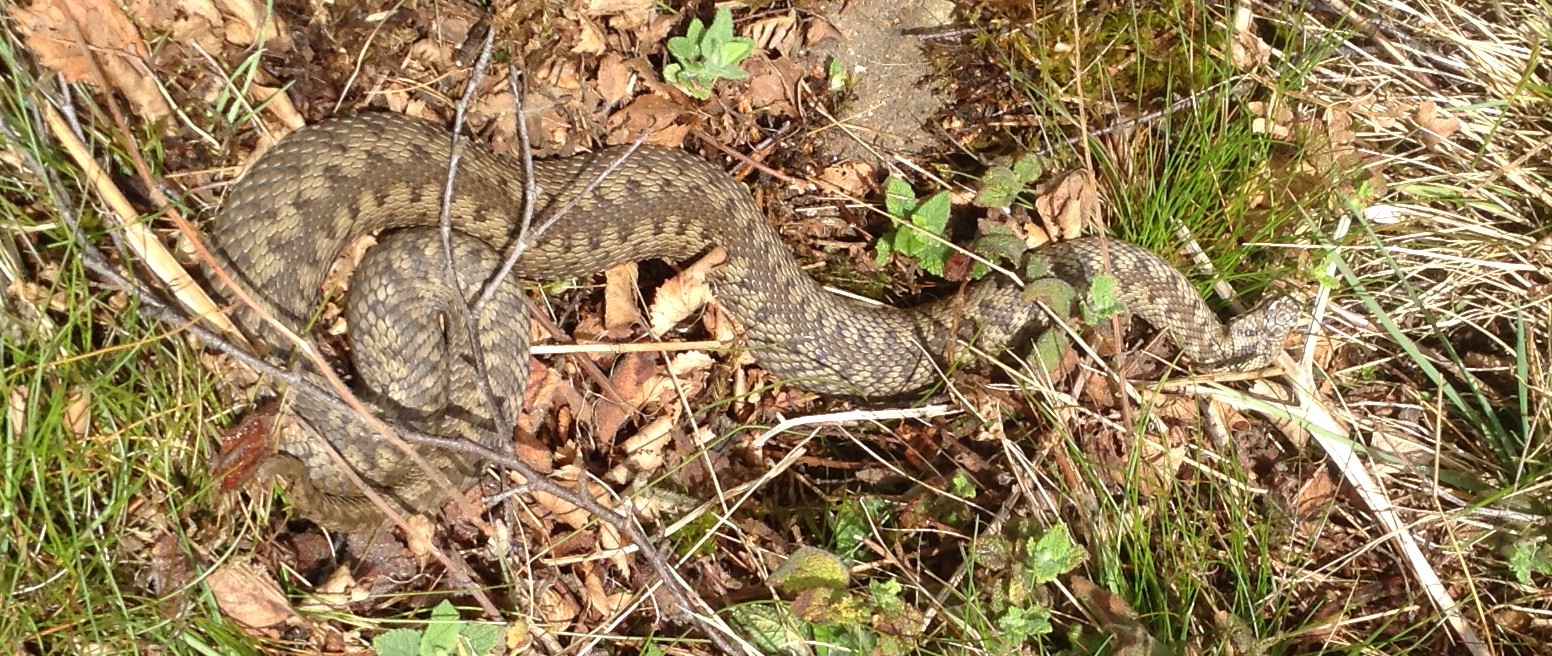The best kind of walks are when you find what you weren’t expecting. Our initial target for the day was a dead pheasant on a road verge in Berwickshire, reportedly ripe with beetle larvae which were to be collected up for the National Museum of Scotland. There was also a dead hare nearby, more road kill, which yielded up some more beetles, but that was all of that kind of work we had stomach for. We set off up the slope above looking for entomological action, but there was nothing much about, the air not yet warm and the birch leaves only just out, the oak still lingering in the bud. Some microscopic flies were spotted, offered to me and rejected – one has one’s limits. Otherwise I caught a March fly, a small muscid in the hope that it might be something else, and a few others for future puzzling. Then, crossing a scree slope a cry alerted me to what I had almost stood on .. an adder, also making the best of the faint-hearted spring weather. I looked less for flies and more at the ground after that.

Next stop was a commercial conifer forest, barren territory itself, though a fringe of bilberry could have yielded green hairstreak butterflies if the sun came out, which it didn’t. A relic of birch and oak woodland on a steeper slope was more interesting, with a pretty day-flying moth (common heath, Ematurga atomaria) which took some effort to catch. Some greylag geese honked in the valley below, and far in the distance a cuckoo called, always a pleasure to hear if you aren’t a meadow pipit. There was little else about, a drab micro moth, a tiny hoverfly (Neoascia tenur), and despite some muscular use of the sweep net on heather, a complete failure to find the larvae of a micro moth that builds a tiny protective case that looks just like the leaves.

Heading for home, late as usual, there was little hope of finding anything much now, but I kept an eye on the fence posts between the plantation and a tightly cropped sheep field. Where there isn’t much else to land on, a fence post can provide a warm, sheltered spot for a beleaguered insect. A couple of flies looked interesting and were expertly potted, but the star was a sharply marked micro moth with perky antennae, Esperia sulphurella, giving a tropical flavour to a distinctly Scottish landscape. Then, for no good reason, we detoured into a ride in the plantation and flushed a barn owl from its roost or nest high up in one of the trees.

The final surprise for the day was the discovery that amongst the fence post flies was an Empididae – a very stylish fly with its oversized wings, eyes that cover almost the whole of the head, outstretched antennae and stilleto proboscis. These are predators that catch and suck dry even smaller flies. Some species wrap up their prey in silk and present it to their chosen female as a prelude to mating. Who says flies are boring!

